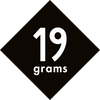There are two groups of preparation methods for filter coffee: immersion and percolation. Although the final product is usually quite similar, the two methods have their strengths and weaknesses.
Simply put, in an immersion, all the coffee floats together with all the water for all the time. The French Press, Clever Dripper and Cupping are all immersion methods. In a percolation, the water flows steadily through the coffee, and is slowly added throughout the process. Pour-over methods like V60 or Chemex, filter coffee machines, and even espresso are all percolation methods.
What are the strengths and weaknesses? Immersion is the easier method, and it's quite hard to get a bad cup through it. As long as you have the right amount of coffee and water, and they have the right malt degree and temperature, you really just have to throw everything together and wait.
For that, filtration is not as easy with immersion. The French Press is especially known for its heavier body, as not all the little coffee grains are filtered out. Here it's a matter of efficiency: sure, you could pour the finished coffee through a paper filter and get a crystal clear cup, but it would take a long time.
Percolation is a more difficult process compared to immersion. Many variables must be taken into account: that the water flows regularly through a shallow bed of coffee so that the coffee is pulled evenly, and that the process happens in a specific time window.
With these many variables also comes a greater degree of accuracy. With a percolator, you have more control over the final cup. The first part of the extraction tastes completely different than the last, and this allows you to produce different flavor profiles. A longer extraction could lower the acidity of a coffee, or a fruity note could be brought out with a faster process.
Do you have a favorite method? Get some tutes from our filter coffee range and experiment with immersion and percolation!




